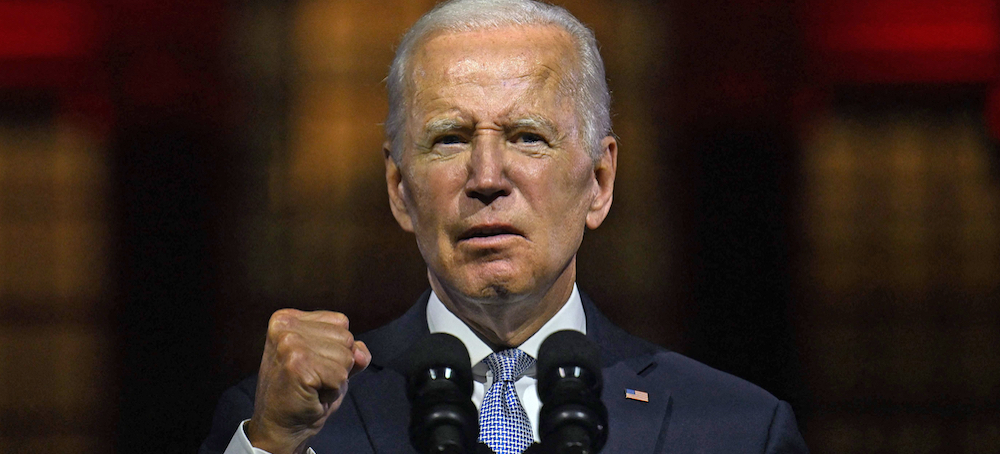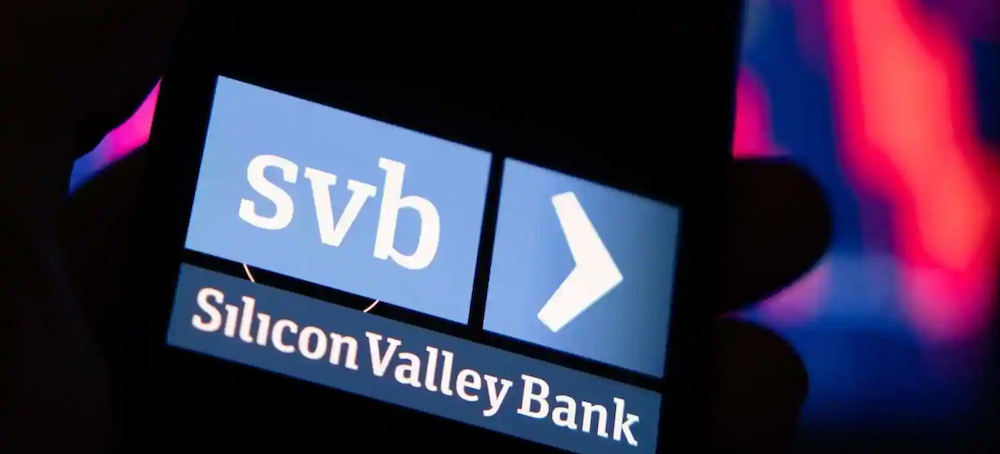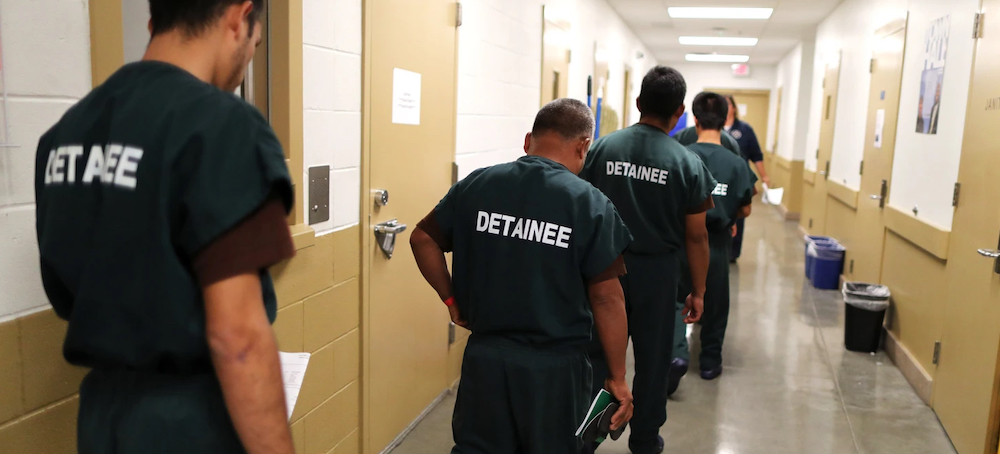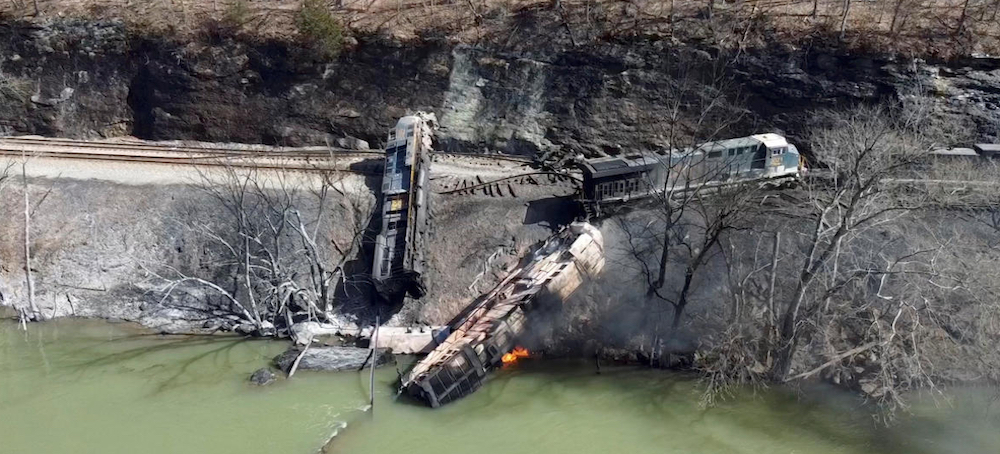Live on the homepage now!
Reader Supported News
One Elon is a visionary; the other is a troll. The more he tweets, the harder it gets to tell them apart.
Take, just this week, a back-and-forth on Twitter, which, as is usually the case, escalated quickly. A Twitter employee named Haraldur Thorleifsson tweeted at Musk to ask whether he was still employed, given that his computer access had been cut off. Musk—who has overseen a forced exodus of Twitter employees—asked Thorleifsson what he’s been doing at Twitter. Thorleifsson replied with a list of bullet points. Musk then accused him of lying and in a reply to another user, snarked that Thorleifsson “did no actual work, claimed as his excuse that he had a disability that prevented him from typing, yet was simultaneously tweeting up a storm.” Musk added: “Can’t say I have a lot of respect for that.” Egregious Elon was in full control.
By the end of the day, Musk had backtracked. He’d spoken with Thorleifsson, he said, and apologized “for my misunderstanding of his situation.” Thorleifsson isn’t fired at all, and, Musk said, is considering staying on at Twitter. (Twitter did not respond to a request for comment, nor did Thorleifsson, who has not indicated whether he would indeed stay on.)
The exchange was surreal in several ways. Yes, Musk has accrued a list of offensive tweets the length of a CVS receipt, and we could have a very depressing conversation about which cruel insult or hateful shitpost has been the most egregious. Still, this—mocking a worker with a disability—felt like a new low, a very public demonstration of Musk’s capacity to keep finding ways to get worse. The apology was itself surprising; Musk rarely shows remorse for being rude online. But perhaps the most surreal part was Musk’s personal conclusion about the whole situation: “Better to talk to people than communicate via tweet.”
This is quite the takeaway from the owner of Twitter, the man who paid $44 billion to become CEO, an executive who is rabidly focused on how much other people are tweeting on his social platform, and who was reportedly so irked that his own tweets weren’t garnering the engagement numbers he wanted that he made engineers change the algorithm in his favor. (Musk has disputed this.) The conclusion of the Thorleifsson affair seems to betray a lack of conviction, a slip in the confidence that made Visionary Elon so compelling. It is difficult to imagine such an equivocation elsewhere in the Musk Cinematic Universe, where Musk seems more at ease, more in control, with the particularities of his grand visions. In leading an electric-car company and a space company, Musk has expressed, and stuck with, clear goals and purposes for his project: make an electric car people actually want to drive; become a multiplanetary species. When he acquired Twitter, he articulated a vision for making the social network a platform for free speech. But in practice, the self-described Chief Twit had gotten dragged into—and has now articulated—the thing that many people understand to be true about Twitter, and social media at large: that, far from providing a space for full human expression, it can make you a worse version of yourself, bringing out your most dreadful impulses.
We can’t blame all of Musk’s behavior on social media: Visionary Elon has always relied on his darker self to achieve his largest goals. Musk isn’t known for being the most understanding boss, at any of his companies. He’s called in SpaceX workers on Thanksgiving to work on rocket engines. He’s said that Tesla employees who want to work remotely should “pretend to work somewhere else.” At Twitter, Musk expects employees to be “extremely hardcore” and work “long hours at high intensity,” a directive that former employees have claimed, in a class-action lawsuit, has resulted in workers with disabilities being fired or forced to resign. (Twitter quickly sought to dismiss the claim.) Musk’s interpretation of worker accommodation is converting conference rooms into bedrooms so that employees can sleep at the office.
In the past, though, the two aspects of Elon aligned enough to produce genuinely admirable results. He has led the development of a hugely popular electric car and produced the only launch system capable of transporting astronauts into orbit from U.S. soil. Even as SpaceX tried to force out residents from the small Texas town where it develops its most ambitious rockets, it converted some locals into Elon fans. SpaceX hopes to attempt the first launch of its newest, biggest rocket there “sometime in the next month or so,” Musk said this week. That launch vehicle, known as Starship, is meant for missions to the moon and Mars, and it is a key part of NASA’s own plans to return American astronauts to the lunar surface for the first time in more than 50 years.
Through all this, he tweeted. Only now, though, is his online persona so alienating people that more of his fans and employees are starting to object. Last summer, a group of SpaceX employees wrote an open letter to company leadership about Musk’s Twitter presence, writing that “Elon’s behavior in the public sphere is a frequent source of distraction and embarrassment for us”; SpaceX responded by firing several of the letter’s organizers. By being so focused on Twitter—a place with many digital incentives, very few of which involve being thoughtful and generous—Musk seems to be ceding ground to the part of his persona that glories in trollish behavior. On Twitter, Egregious Elon is rewarded with engagement, “impressions.” Being reactionary comes with its rewards. The idea that someone is “getting worse” on Twitter is a common one, and Musk has shown us a master class of that downward trajectory in the past year. (SpaceX, it’s worth noting, prides itself on having a “no-asshole policy.”)
Does Visionary Elon have a chance of regaining the upper hand? Sure. An apology helps, along with the admission that maybe tweeting in a contextless void is not the most effective way to interact with another person. Another idea: Stop tweeting. Plenty of people have, after realizing—with the clarity of the protagonist of The Good Place, a TV show about being in hell—that this is the bad place, or at least a bad place for them. For Musk, though, to disengage from Twitter would now come at a very high cost. It’s also unlikely, given how frequently he tweets. And so, he stays. He engages and, sometimes, rappels down, exploring ever-darker corners of the hole he’s dug for himself.
On Tuesday, Musk spoke at a conference held by Morgan Stanley about his vision for Twitter. “Fundamentally it’s a place you go to to learn what’s going on and get the real story,” he said. This was in the hours before Musk retracted his accusations against Thorleifsson, and presumably learned “the real story”—off Twitter. His original offending tweet now bears a community note, the Twitter feature that allows users to add context to what may be false or misleading posts. The social platform should be “the truth, the whole truth—and I’d like to say nothing but the truth,” Musk said. “But that’s hard. It’s gonna be a lot of BS.” Indeed.
READ MORE  "Daylight saving time is essentially mandated jet lag." (image: Paige Vickers/WP)
"Daylight saving time is essentially mandated jet lag." (image: Paige Vickers/WP)
Now the Sunshine Protection Act sits with the House. But as we prepare to change our clocks this November — and with news of Mexico mostly opting out of daylight saving time, effective this past weekend (the exceptions: towns and cities on the U.S. border) — the idea is sure to be debated again. Popular opinion supports getting rid of clock changes, and for good reason — they’re disorienting and disruptive. But eternal daylight saving time is not the answer. Especially if we want to protect young people.
Humans evolved outside, in nature, and our brain clocks are exquisitely attuned to the sun. Standard time is an approximation of the solar day and is more or less in line with the rising and setting sun. Decades of research shows we’re at our best when we live harmoniously this way.
Daylight saving time, on the other hand, is essentially mandated jet lag. Permanent daylight time would leave us perpetually out of sync with our powerful internal clocks and would deny us the sun’s rays when our brains and bodies need them most: in the mornings.
If the House were to pass the Sunshine Protection Act in its current form, then for the first time in 40 years, the United States would experience daylight saving time in winter. The sun would rise unnaturally late, particularly in the northwestern part of every time zone: 9 a.m. in parts of Texas, 9:15 a.m. in Indiana, 9:45 a.m. in parts of Michigan. Students wouldn’t see the sun until well into their school day. This experiment happened in the United States in 1974. People found it so painful, it was abandoned after one winter.
This would all be tremendously bad for kids. Because of the later biological pacing of the teenage brain, waking at 7 a.m. already feels to young people like waking at 5 a.m. With permanent daylight saving time, it would feel like 4 a.m. This would put a serious strain on teen mental health. The result would be, among other things, shortened sleep for a population that is already severely sleep-deprived and a potential uptick in rates of depression, when teens are already struggling with elevated levels of depressive symptoms and suicidal thinking.
And let’s not forget: A policy that’s bad for teens is bad for the rest of us. Sleep-deprived teens are driving next to us on the freeway. Sleep-deprived teens are twice as likely to experience mental health symptoms, which affect families, schools and health-care systems.
In some parts of the United States, teens are getting relief in the form of later high school start times, which California has pioneered and New York is considering. If the country were to impose permanent daylight saving time, the beneficial effects of these policies would be erased.
All of us, children and adults, need morning sun and evening darkness to get enough sleep and to be healthy and happy. Morning sun tells every cell and organ in the body to start its daily work; in our repertoire of daily habits, morning sun is the slam dunk.
Daylight saving time takes this from us. During this period, the majority of people go to bed later, while still having to wake at the same time for school or work, which leads to accumulated sleep debt. The reason our health hasn’t deteriorated further is that this happens in spring and summer, when the day length is long and the sun is already up when we wake. Daylight saving time in winter would make every morning a dark, dreary struggle — and people’s health and moods would unravel.
Sens. Marco Rubio (R-Fla.), Kyrsten Sinema (D-Ariz.) and others snuck the Sunshine Protection Act through the Senate without review or deliberation. Under the bill, Sinema’s Arizona would get to keep its already permanent year-round standard time, which it has had since 1968. (Why Sinema would rejoice at the rest of the country being forced to spring permanently forward is baffling.)
We all enjoy the sun. But in winter, when sunshine is scarce, we don’t have the luxury of tinkering with time. Evening sun is for our entertainment. Morning sun is for our health.
Healthier than permanent daylight saving time would be to stick with what we have, changing times twice a year. But healthiest would be for Congress to change the wording of the Sunshine Protection Act to permanent standard time.
It’s rare that we have the chance to elevate youth mental health — everyone’s health — in a sweeping and immediate way. Permanent standard time would give us this opportunity.
READ MORE  President Joe Biden. (photo: NBC)
President Joe Biden. (photo: NBC)
Takeaways From Biden's $6.9 Trillion Budget Proposal: Tax the Rich. Cut the Deficit. Take on the GOP.
Joey Garrison, USA TODAY
Garrison writes: "President Joe Biden released a federal budget Thursday that sets the stage for a reelection campaign, reviving plans to raise taxes on the wealthiest Americans and corporations to expand the government's social safety net and transform the economy."
Although the spending and tax hikes have no chance of passing the Republican-controlled House of Representatives, the 2024 budget proposal establishes Biden's priorities amid a standoff with congressional Republicans over raising the nation's debt ceiling to avert an economic crisis this summer.
Biden called on Republicans to show which programs they want to cut as he unveiled proposals to extend the solvency of Medicare, fund national paid family leave, and subsidize child care and free community college for many low-income students.
The president's $6.9 trillion budget for the next fiscal year – an 8% increase over this year's budget – would increase the Defense Department's budget by 3.2% and boost non-defense discretionary spending by 6%. It proposes a 3.2% increase to mandatory spending for programs such as Medicare, Medicare and Social Security.
Here are five takeaways:
$5 trillion in new taxes, including a new billionaires' tax
Biden's budget revives several proposals to increase taxes on corporations and the wealthiest Americans that Biden has been unable to pass amid Republican opposition in Congress.
The budget includes about $5 trillion in new taxes over 10 years. A key proposal – popular among the progressive wing of the Democratic Party – is a billionaire minimum tax that would require the wealthiest .01% of Americans to pay at least 25% on their income, including on appreciated assets. That's a higher rate than the 20% minimum tax for billionaires Biden proposed last year.
"No billionaire should ever pay a lower tax rate than a school teacher or a firefighter," Biden said a statement attached to the 182-page budget document.
Biden also wants to repeal former President Donald Trump's tax cuts for the wealthiest Americans by restoring the 39.6% tax rate for single filers earning at least $400,000 a year and married couples earning at least $450,000. Biden proposed taxing capital gains at the same rate as wage income for Americans who earn at least $1 million.
The budget would eliminate Trump's 2017 tax cuts for corporations that decreased the rate they pay on profits to 10% by setting the new rate at 28%, still below the 35% it was before 2017.
Other changes include quadrupling a new tax on corporate stock buybacks, doubling the tax rate for U.S. multinational corporations from 10.5% to 21% and increasing the Medicare tax rate from 3.8% to 5% for high-income earners.
Wrestling the deficit argument away from Republicans
Through tax increases instead of spending cuts backed by Republicans, Biden's budget would reduce the deficit by $2.9 trillion over the next decade.
The White House is trying to wrestle the deficit argument away from Republicans, who for years have criticized Democrats as reckless spenders who lack fiscal responsibility to pay off expensive programs.
Not coincidently, the projected deficit reduction closely matches the $3 trillion the White House projects Republican tax cuts would add to the deficit over 10 years.
"I'll take our plan as fiscally responsible any day," said Shalanda Young, director of the White House Office of Management and Budget.
Another Biden proposal looks to save $160 billion by targeting "wasteful spending of Big Pharma." His plan would expand the number of drugs Medicare can select for negotiation as a result of the president's Inflation Reduction Act, approved last year.
Republican House Speaker Kevin McCarthy and other GOP lawmakers have pushed for spending cuts in a package to raise the debt ceiling, but they have not specified which programs they want to target to achieve their goal of eliminating the deficit in 10 years without raising taxes.
"If they say they want to cut the deficit, but their plans would explode the deficit, how are they going to make the math work?" Biden said, laying out his budget in a speech in Philadelphia. "What are they going to cut?"
Biden said he's willing to meet with McCarthy "anytime, tomorrow " if he has his budget to put forward. "Lay it down. Tell me what you want to do. I'll show you what I want to do."
A plan for Medicare solvency but not for Social Security
Biden, who has repeatedly accused of Republicans of wanting to cut Medicare and Social Security, has a plan for extending Medicare solvency beyond 2050 in his budget.
But he doesn't have a similar strategy to address the funding shortfall facing Social Security, instead pledging to protect the program for disabled people and senior citizens against future cuts.
Both programs are major drivers of a national deficit that's expected to increase by $19 trillion over the next decade.
To ensure Medicare is funded for the next 25 years, Biden's budget proposes using proceeds from the increased Medicare tax rate to bolster Medicare’s hospital-insurance fund. He also wants to expand the net investment income tax to apply to more types of income and divert revenue to help Medicare.
For Social Security, Biden's budget proposes $1.4 billion for Social Security staff and information technology but no tax overhaul to make the program solvent.
Young said Republicans are "the No. 1 threat" to Social Security, arguing the president's budget protects the program by taking cuts off the table.
Child care, paid leave and other pieces of Biden's stalled 'Build Back Better' agenda
Biden's budget resurfaces proposals for national paid family and medical leave, subsidized child care, expanded community college and other areas he was unable to pass as part of his Build Back Better domestic agenda.
Each would mark a dramatic expansion of the government's social safety net, but those proposals couldn't muster support in the Senate even when Democrats controlled the House during the first two years of Biden's presidency.
The plans, although dead on arrival in the Republican-controlled House, allow Biden to make a sharp contrast with Republicans who want to cut government spending.
"Show me your budget, and I'll tell you what you value," Biden said.
Biden's national paid leave plan would provide up to 12 weeks of leave for workers for a new child, taking care of an ill loved one, recovering from illness and other emergencies, and three days to grieve the death of a loved one.
The budget would provide federal funds to states to increase options for child care for more than 16 million children. It would also provide federal funds to states to offer universal, free pre-kindergarten to 3- and 4-year-olds.
With Build Back Better, Biden offered tuition-free community college. His new budget doesn't go quite as far, but it offers free community college for families earning $125,000 or less enrolled in Historically Black Colleges and Universities, tribal-controlled universities and minority-serving institutions.
Other proposals in Biden's budget would restore child tax credits from Biden's American Rescue Plan, expand federal funds for affordable housing and rental assistance, provide $150 billion in new funding for Medicaid over 10 years, cap insulin costs at $35 for all Americans and reduce energy costs for low-income Americans.
Emphasizing climate change and microchips
Biden's budget would double down on his administration's efforts to increase domestic manufacturing in the "green" economy and make the U.S. a leader in the production of microchips.
The budget includes $21 billion in discretionary funds to support activities that were authorized in the CHIPS in Science Act, which passed with bipartisan support last year to offer incentives to microchip companies to expand in the U.S.
In an appeal to blue-collar Americans, Biden has talked about turning depleted factory towns in the Midwest into the new centers for microchip production to help the U.S. catch up to China.
The budget provides a record $210 billion for federal research and development in science, technology and invocation and $375 million to create a new institute within the National Institutes of Standard and Technology Services dedicated to the domestic production of technologies.
To address climate change, the budget includes $1.2 billion to support Department of Energy industrial decarbonization; $5 billion for the Environmental Protection Agency to reduce greenhouse gas emissions and build resilience to the impacts of extreme weather; and $16.5 billion in climate science and clean-energy innovation.
The White House said the proposals would help carry out Biden's goal to cut greenhouse gas emissions in half by 2030.
READ MORE Silicon Valley Bank (SVB), over decades, became the go-to bank for startups. (photo: Bloomberg)
Silicon Valley Bank (SVB), over decades, became the go-to bank for startups. (photo: Bloomberg)
ALSO SEE: Silicon Valley Bank Seized by US FDIC as Depositors Pull Cash
Silicon Valley Bank and Silvergate won't wreck the economy. They failed because the economy is already wrecked.
Both banks served the technology industry—already heavily hit by interest rate hikes and the general downturn as a result of the COVID-19 pandemic and the war in Ukraine—albeit in different ways.
The first bank to implode was Silvergate, a Californian bank founded in 1988 that in recent years went all-in on banking the crypto industry. It began to run into trouble as the crypto economy collapsed last year, when depositors took their money out at a staggering pace—within months, its deposits dried up from over $12 billion to just under $4 billion at the end of 2022. The bank tried to sell securities that it had purchased to cover the losses, but rising interest rates had eroded their value. The bank got a $4.3 billion loan from the Federal Home Loan Bank (FHLB)—effectively a government bailout—but as its fortunes soured, FHLB demanded its money back right away. As problems mounted, the bank's stock tanked, and finally it announced voluntary liquidation on Thursday.
The second bank to collapse was Silicon Valley Bank (SVB), which over decades has become the go-to banker for startups. SVB this week announced that it was fundraising to cover losses from the tech industry's downturn, which has seen the stock of even major firms like Meta and Tesla fall precipitously. Rumors about SVB's delicate financial position had already been spreading for months, with analysts warning that it—and other banks—were offering high interest rates to retain customers even as they had many low-interest loans (given during better times) still simmering. The fundraising announcement set off a bank run, with techies pulling their cash out in droves. On Friday, SVB shut down.
With two banks now totally collapsed, many are now worried about contagion—that is, whether the collapse of these niche banks could spiral out into the wider economy. Shares of other banks in the U.S. (largely on the West Coast) fell precipitously on the news. European banks are also feeling the squeeze as share prices drop, and even larger banks like Bank of America and JPMorgan saw dips in their stock price.
The right way to see this situation, however, might be that the contagion has already spread; Silvergate and SVB failing won't wreck the economy, rather, they are failing because the economy is already wrecked.
It's tempting to write off Silvergate's failure as an isolated case due to its association with crypto, but as we've written at Motherboard before, crypto is actually tightly linked to movements in the wider economy. It is just more fragile, frivolous, and has fewer safeguards than the rest of the economy, meaning that shocks to the wider system tend to hit there first. Yes, FTX went bust because it was allegedly being run like a freewheeling slush fund for craven gamblers, but the money was lost because the crypto markets tanked in the first place. Similarly, Silvergate—even though it served its own niche industry—is part of the same trend affecting SVB, because tech's downturn is also tied to more general economic realities. And when these banks' core industries falter, when clients start pulling their money out in a panic, they run right up against the brick wall of the current financial landscape.
So, what does this all mean? Many analysts are now eyeing small- and mid-sized regional banks around the nation, which Silvergate and SVB both fall into the category of. As Bloomberg noted, these small banks are typically not looked at as closely by regulators as the big players, and they tend to have a less diversified stream of funding, making them more exposed to volatility.
“Silicon Valley Bank is just the tip of the iceberg,” Christopher Whalen, chairman of financial consulting firm Whalen Global Advisors, told Bloomberg. “I’m not worried about the big guys but a lot of the small guys are going to take a terrible kicking."
To put it simply, these banks are middle dominoes, not the first ones. We see signs of more dominoes winding into the distance everywhere lately, including in plans at automaker GM to cut the "majority" of its white-collar workforce as it anticipates further economic downturn while also making capital-heavy investments in electric vehicle manufacturing.
For now, it seems like most experts are not seeing the current situation as being an existential risk for the U.S. economy. Not every bank has a client base totally concentrated on cratered industries.
But the point is: Rather than being the cause of a meltdown, SVB and Silvergate's collapses are more likely symptoms of one that has already occurred, and may well get worse.
READ MORE  Credit card companies funneled more than $600,000 during the last election cycle to House Republicans now fighting to preserve the companies' ability to charge excessive late fees. (photo: FreePix.uk)
Credit card companies funneled more than $600,000 during the last election cycle to House Republicans now fighting to preserve the companies' ability to charge excessive late fees. (photo: FreePix.uk)
In February, the Consumer Financial Protection Bureau proposed a rule that would limit most credit card late fees to $8. The rule is being fought by a group of House Republicans who took more than $600,000 from credit card companies in the last election cycle.
Among the seventeen Republicans who sent a letter to federal regulators this month opposing a Biden administration effort to rein in the fees, at least fifteen received contributions from the credit card industry in the 2022 election cycle. Three of the lawmakers are among the top five House recipients of campaign cash from the industry.
In February, the Consumer Financial Protection Bureau (CFPB) proposed a rule that would limit most credit card late fees to $8, down from the $41 companies are currently permitted to charge. Such late fees are a major profit center for credit card companies, and cost cardholders $12 billion in 2020, according to the consumer watchdog agency.
The fees fall most heavily on consumers in low-income and majority-black neighborhoods, and the agency estimates that capping them could save as much as $9 billion a year.
Credit card issuers were technically prohibited from charging unreasonable fees by a 2009 law that also restricted interest rate increases. But when the Federal Reserve finalized rules implementing the law the following year, the agency included a loophole adjusting the maximum allowable fee with inflation each year, even if credit card companies’ collection costs remained the same.
The CFPB proposal would eliminate the automatic annual increase and require credit card companies to prove that any fees in excess of $8 are necessary to cover their collection costs. It would also prohibit any fees exceeding 25 percent of the minimum payment due — a welcome change for anyone who’s ever been hit with a double-digit penalty on a 50-cent underpayment — and establish a fifteen-day grace period.
The US Chamber of Commerce, bank lobbying groups, and individual credit card companies are opposing the rule, arguing that limiting fees on delinquent borrowers will necessitate raising costs for other consumers.
House Republicans echoed those arguments in a March 1 letter, writing that the CFPB’s proposed measures would “socialize the costs of late and defaulting payors” by forcing credit card issuers to offset lost income by increasing interest rates. The letter, led by House Financial Services Committee chair Patrick McHenry (NC) and committee member Andy Barr (KY), asks the consumer watchdog to provide its economic justification for the rule.
The CFPB estimates that creditcard companies generate five times more income from late fees than they spend to collect the late payments.
McHenry and Barr were the fourth and fifth largest recipients, respectively, of campaign donations from the credit card industry in the House last cycle. Rep. Blaine Luetkemeyer (R-MO), who also signed the letter, was the House’s top recipient of credit card industry donations.
Republicans have also launched a series of broad-ranging attacks on the CFPB itself, which was created as part of the Wall Street reform law Democrats passed in response to the 2008 financial crisis.
The House Financial Services Committee will hold a hearing on Thursday “to examine the leadership structure, funding, budget, and operations of the CFPB and areas in which reforms are needed.”
The CFPB is separately facing an existential threat in the form of a pending Supreme Court case challenging the constitutionality of its funding arrangement. Public comments on the proposed rule restricting late fees are due April 3.
READ MORE  The Otay Mesa Detention Center near San Diego, California. (photo: Reuters)
The Otay Mesa Detention Center near San Diego, California. (photo: Reuters)
"An autopsy is pending to determine the official cause of death," reads the release.
Local migrant rights organizations are now demanding answers and continue to raise awareness about alleged deplorable conditions inside ICE detention centers.
“It does not surprise us one bit that there’s another in-custody death. "The question here is not if...it's when will another death occur."
said Benjamin Prado, a program coordinator with US-Mexico Border Program, a local organization that provides resources to families with loved ones who are detained.
He and other groups have been calling for the shutdown of ICE detention centers, like the one in Otay Mesa, for years. On Sunday, Prado and others were protesting outside a detention center in downtown San Diego.
“Inadequate medical attention, inadequate food, just overall sanitary conditions inside these facilities are atrocious,” said Prado.
Prado says they have filed a formal request to learn additional details about the Romanian man's cause of death.
The Romanian man’s death is now the second ICE-custody death in fiscal year 2023, according to the agency’s website.
The next most-recent death occurred in Colorado. Looking at the year prior, there were three ICE-custody deaths reported, and five deaths the year before that.
In fiscal year 2020, there were 21 ICE-custody deaths reported across the U.S.
Katie Kavanagh, an attorney working with the California Collaborative for Immigrant Justice, says she’s seen conditions inside ICE detention centers firsthand.
“People have shown me photos of cockroaches in the food, moldy food, expired food [...] Terrible medical care. People wait weeks to see a doctor. There are people who are in mental health crisis,” said Kavanagh.
A release following Sunday’s death reads in part: “ICE remains committed to ensuring that all those in its custody reside in safe, secure, and humane environments. Comprehensive medical care is provided from the moment individuals arrive.”
READ MORE  A view of a derailed CSX Corp freight train in Sandstone, West Virginia, March 8, 2023. (photo: photo: Austin Simms/Reuters)
A view of a derailed CSX Corp freight train in Sandstone, West Virginia, March 8, 2023. (photo: photo: Austin Simms/Reuters)
According to a press release from CSX, the train derailed in Sandstone, West Virginia after it “struck a rockslide” at about 4:51 a.m. on Wednesday. The crash caused all four of the train’s locomotives and nine empty coal trains to derail. There were three crew members onboard when the locomotive caught fire — a conductor, engineer and engineer trainee. CSX says that they were all “evaluated and treated for non-life threatening injuries.”
The company says that there is no danger to the public, as there weren’t any hazardous materials on the train. But CSX does admit it has no idea how much diesel fuel and oil spilled into the New River. It says that environmental measures are being deployed to deal with the contamination.
This news comes on the same day that Norfolk Souther’s CEO is facing a senate hearing on railroad safety after the disastrous crash in East Palatine, Ohio, according to ABC News. Alan Shaw reportedly apologized during the hearing and promised to “make it right.”
CBS reports that West Virginia Emergency Management said downstream public water systems were notified of the situation and are currently monitoring for “potential public health impact.” West Virginia American Water has reportedly also been notified and is now monitoring water quality. The organization has temporarily stopped drawing water from the New River and it will “enhance its treatment process, as necessary.”
“Customers should see no impact to their service as a result of this action. The health and safety of our customers is a priority, and there are currently no drinking water advisories in place because of this incident,” American Water said in a press release.
It added that if a drinking water advisory should become necessary, American Water will issue one.
CBS says that this whole thing could still have an impact on the environment despite the fact there weren’t any hazardous materials onboard.
The New River is considered one of the oldest rivers in North America. According to the National Park Service, it’s widely believed that the waterway “has been in its present course for at least 65 million years.” It once ran through Central Ohio, Indiana and Illinois before going into the Mississippi, but much of it got diverted about 10,000 years ago when it was impacted by glacial ice, the service said.
[...]
When the empty coal train went off the tracks, video shows some of the cars ended up in or along the bank of the New River. That area is part of the 53 miles of the river that’s maintained by the National Park Service within the New River Gorge National Park and Preserve.
When oil gets into freshwater bodies, it can cause significant damage depending on the amount involved.
The outlet says that according to the EPS, oil spills in freshwater bodies can still cause significant damage even though those sorts of spills aren’t covered as widely as ones in saltwater bodies like an ocean.
“Freshwater bodies are highly sensitive to oil spills and are important to human health and the environment,” the EPA told CBS News.
There is some good news though. Because the New River is a flowing waterway, the impact will apparently be less severe than if the diesel and oil flowed into standing water. Since the water is moving, the contaminants don’t have the chance to “cling” to plants. That means it is less likely to contaminate the animals that eat those eplants. The EPA goes on to say that oil can end up disrupting local ecology when it gets trapped within rocks in the water.
CBS News says that CSX will be held responsible for cleaning up the derailment site since the company owns 12 feet “from the middle of the track to either side.”
“The safety of our employees and the community is our top priority as we dispatch our teams to assess the situation and develop a plan to completely restore the area,” CSX said in its release. “Our team is in close contact with local police and fire officials and we will continue to work closely with them on our recovery efforts.”
Follow us on facebook and twitter!
PO Box 2043 / Citrus Heights, CA 95611



No comments:
Post a Comment
Note: Only a member of this blog may post a comment.